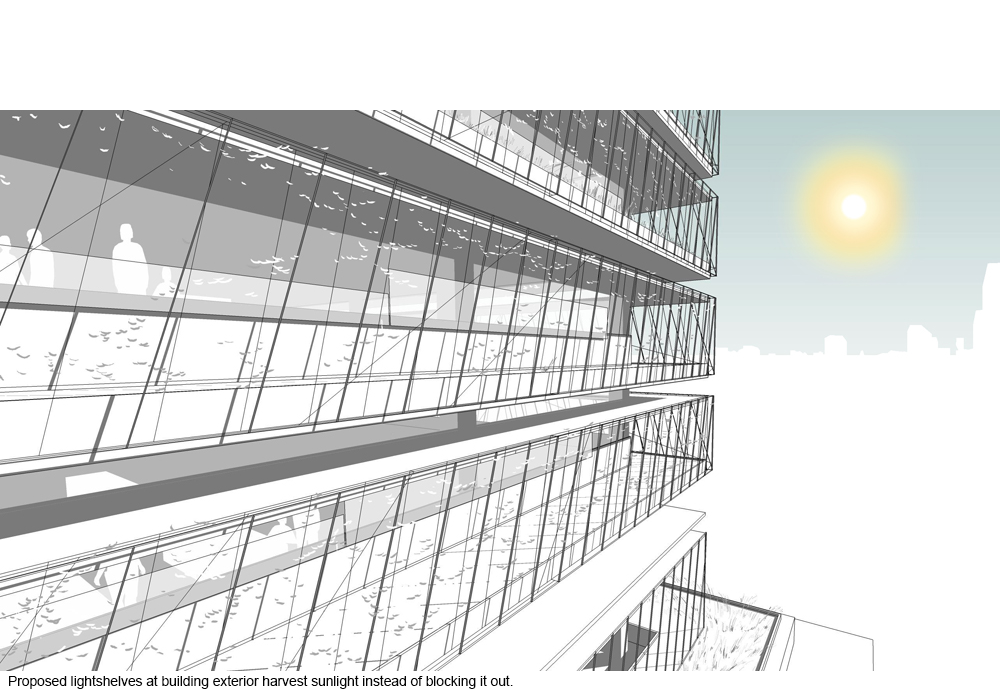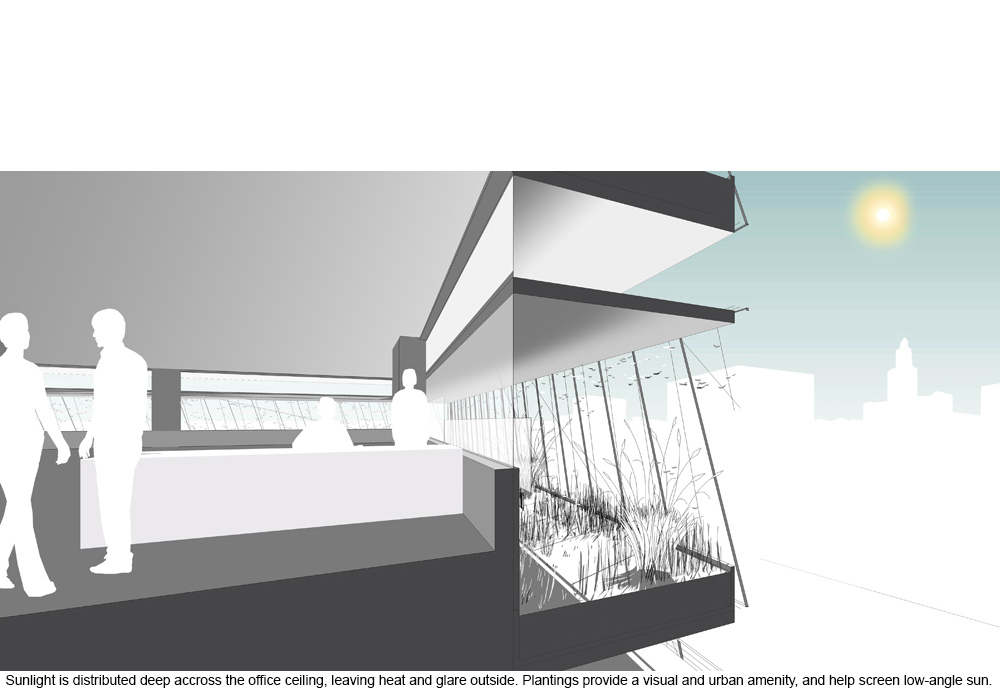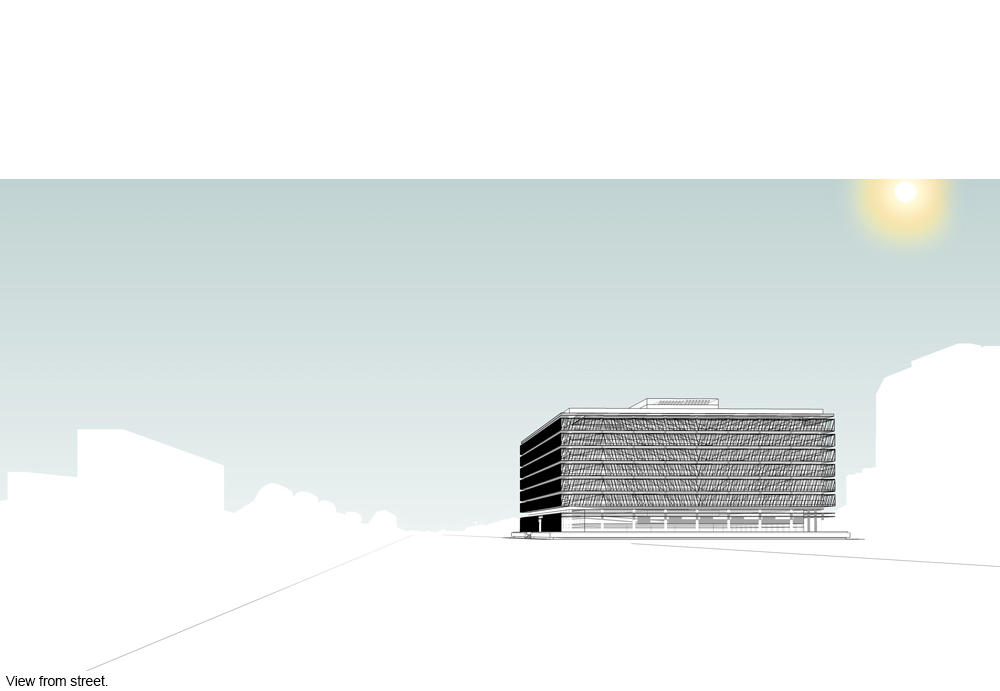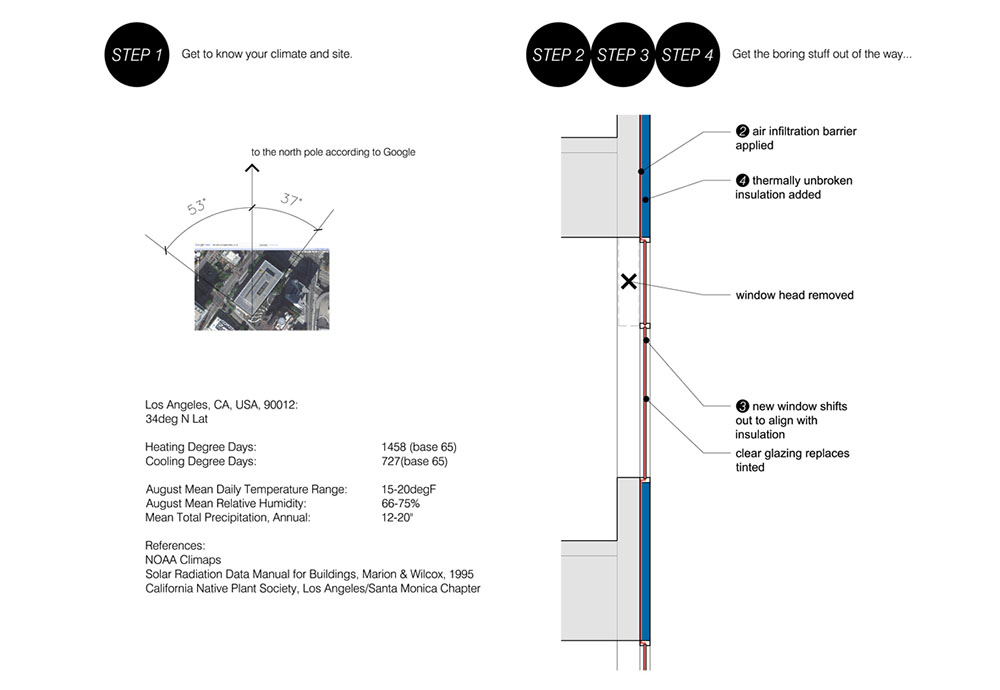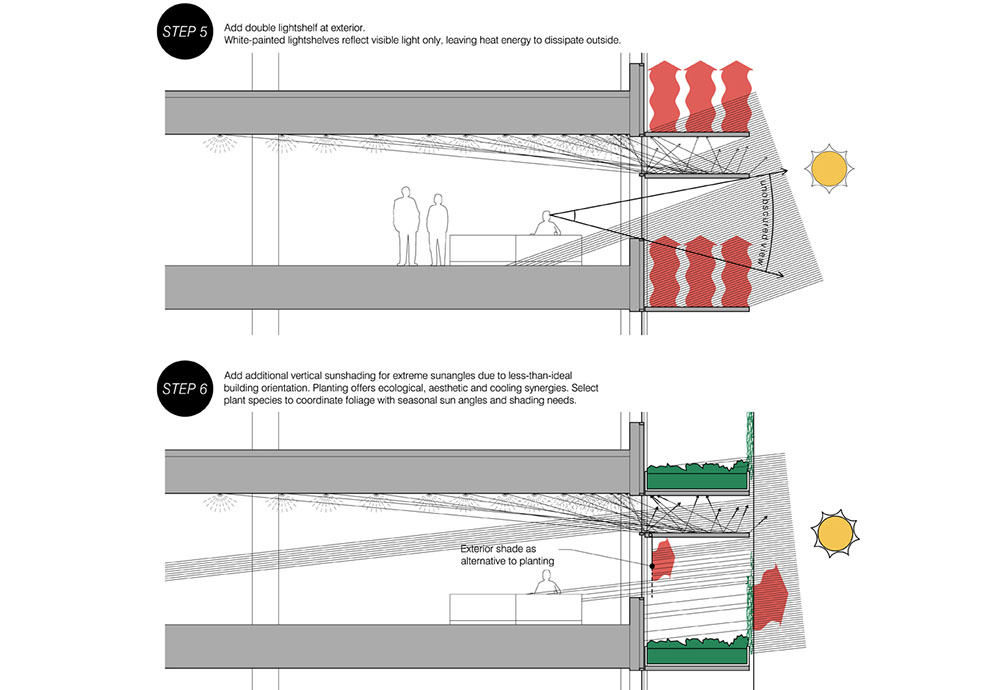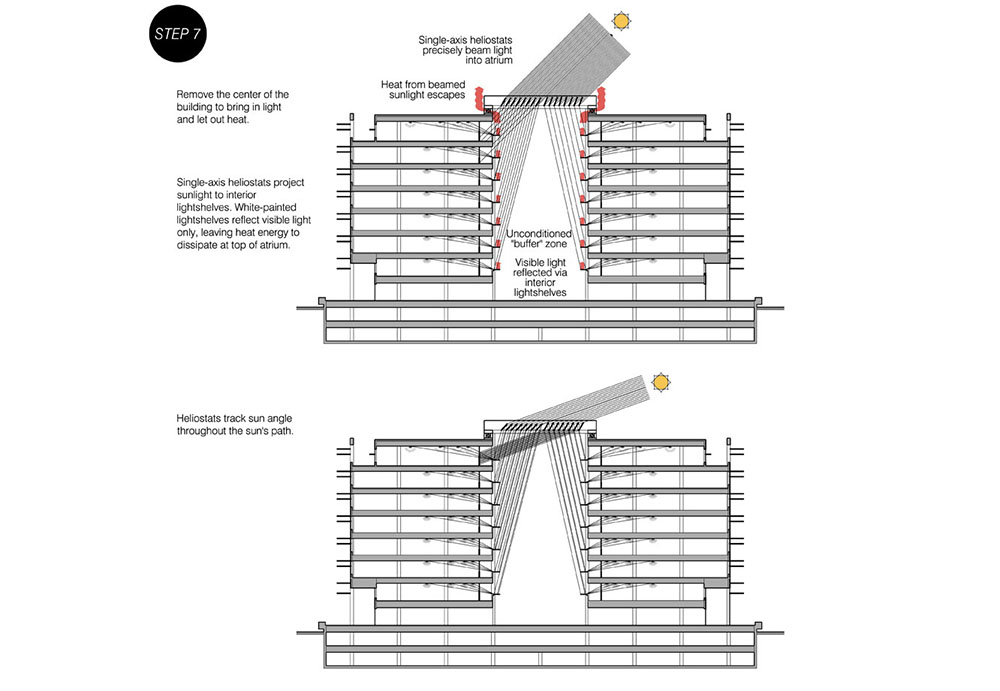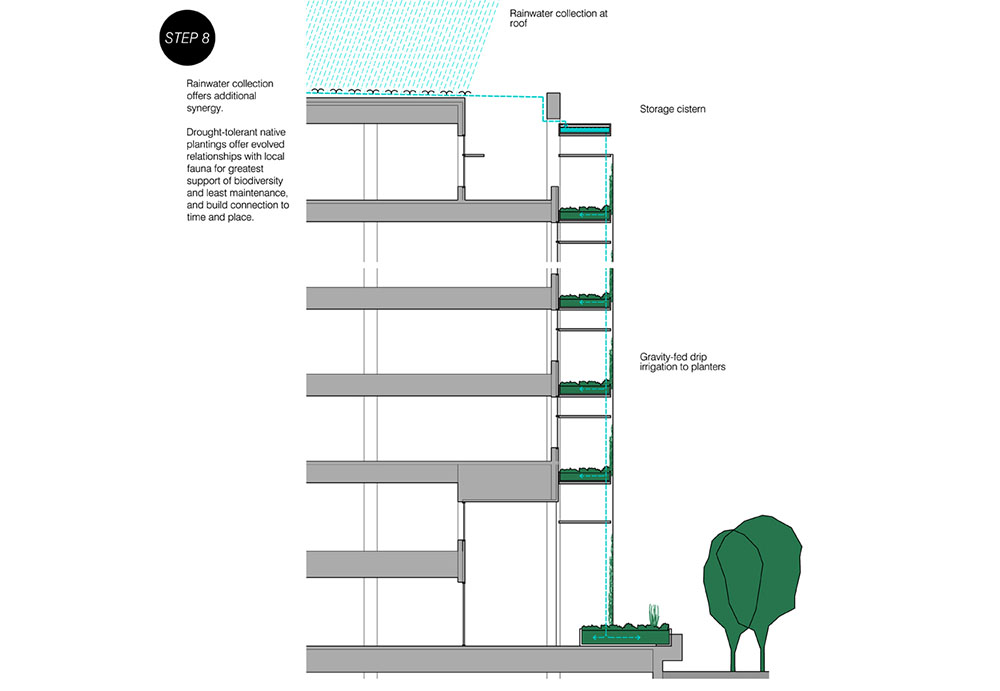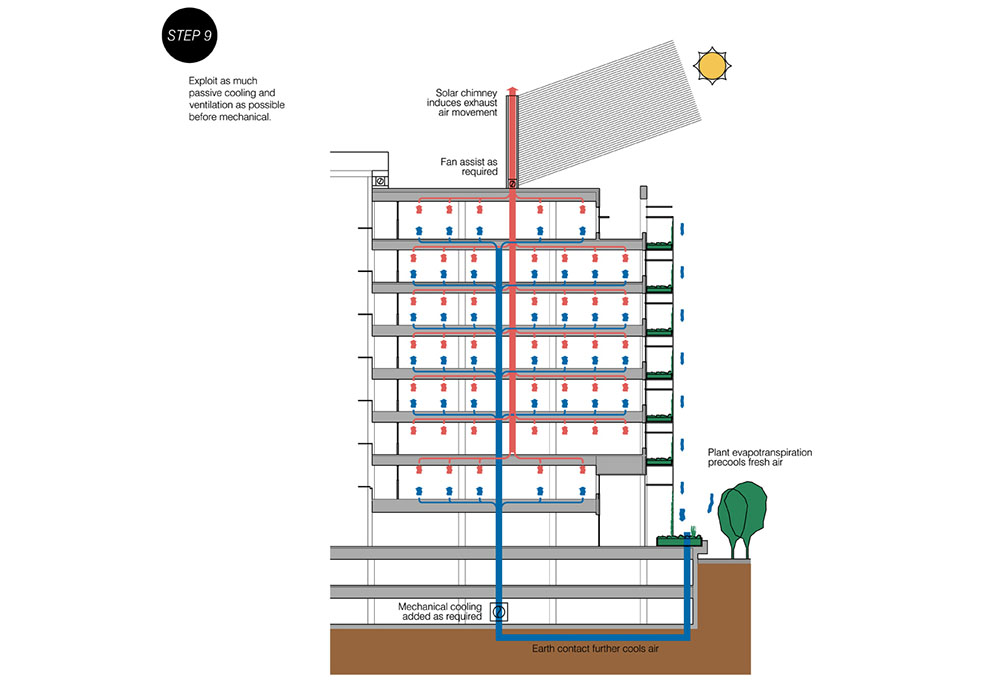Federal Office Renovation
The brief for this competition asked entrants to renovate an existing federal office building to a “zero environmental footprint.” Drawing upon the work of lighting designer William Lam, this solution addresses the central problem with office building energy use, electric lighting, by proposing new exterior lightshelves and an internal light atrium to harness the daylighting power of reflected sunlight, as demonstrated in Lam’s projects. This technique reduces the overarching problems of lighting and cooling loads, and paves the way to candidly achieve the requested comprehensive fix to the building’s energy use, proposed as a “Ten Step Program To End Energy Addiction.”
Project Background:
Over the last 60 years energy costs have not been high enough to drive consideration in office building design. Contemporary offices have evolved deep floor plates to maximize rent-able floor areas and all-glass facades for identity, depending upon cheap energy to make these spaces habitable, electric lighting chief among them. Electric lighting is the single largest user of of energy in conventional offices. It accounts for approximately 5% of all energy used in the US. Even worse, in addition to the energy directly used to make light, electric lighting makes significant waste heat, which must be removed by the air conditioning system, driving up the second largest use of energy in office buildings, cooling-and-ventilating. Unlike most building types, the chunky proportions and high occupant load of conventional contemporary offices mean that even in cool climates the people and equipment inside them provide most of the heat they need. Typical all-glass exteriors absorb the sun’s full heat, and in a warm climate like Los Angeles,’ where there is a significant amount of “air conditioning” needed just to temper outside temperatures, the density of all these added loads only stack the cooling demands higher and higher. It is a very poor cycle of band-aid upon band-aid, derived from simplistic calculations of volume and glassy imagery, whose disregard of the physical forces at play is only conceivable when the consequence of energy use is not a meaningful factor.
As anyone who has worked in one of these buildings knows, functional daylighting is not part of their design. Floor-to-ceiling windows admit far too much daylight at a narrow band around the perimeter and create impossibly high lighting levels, resulting in blinds down much of the time. Deep, shallow floor plates mean that no light penetrates to the interior. Contemporary marquee “sustainable” offices with much-publicized daylighting designs have failed to improve this underlying configuration, typically only strapping on complex automated blind and dimming control systems as their “cutting edge” solution. These are further band-aids which only offer savings at the modest area around the perimeter. In order to prevent glare, their simplistic approach can only block out direct sunlight, abandoning the source of daylight when its potential is at maximum. Furthermore, they fail to redistribute daylight deeper into the floor plates, and perhaps worst of all, their mechanical and electronic complexity is prone to failure, and as shown by recent examples, when they fail, the blinds go back down and all the lights go back on – usually permanently.
By harnessing direct sunlight, redirecting its visible light deep into the building, and diffusing heat and glare before they enter the building, this proposal instead seeks to remedy the shortcomings inherent in the existing office-building configuration and open a candid pathway to a “zero environmental footprint.” It stands on the shoulders of the seemingly forgotten work of the lighting designer William Lam, who, in the early 1980’s, through the real-world trials of built projects, designed, tested, and then revised and improved straightforward maintenance-free sunlight redistribution methods to create functional daylit offices, directly addressing the underlying energy problems and seasonal heating and cooling demands of office buildings instead of ignoring them.
This proposal utilizes two of Lam’s principal solutions. First, it wraps the exterior of the building with a simple physical system of non-automated, fixed exterior lightshelves. Instead of blocking it out, these lightshelves harvest the tremendous visible light contained in direct sunlight, capturing it outside the building facade then redirecting it through raised windows, above eye level, diffusing it evenly and deeply across the office ceiling around the exterior of the building. The problem of glare is eliminated because direct sun is kept outside above eye level. The problem of the sun’s heat is kept off by preventing direct sun from entering the building.
Second, taking advantage of the low height and dispersed central cores typical of federal office buildings, a light-gathering atrium is to be carved out of the dead storage space at the center of the floor plates, adding light to the building’s center. Again, in this case using single-axis mirrored louvers at the top of the atrium, direct sunlight is harvested outside then redirected downwards deep into the atrium where it is bounced to the ceilings of the interior office spaces.
Finally, the balance of the proposal completes a “zero environmental footprint”: exterior insulation and new glazing bring the building’s thermal performance up to the needed levels, exterior planting utilizes the structural investment for the deep exterior lightshelves to provide a visual amenity and native species habitat, and an earth-cooled ventilation system introduces fresh air.
